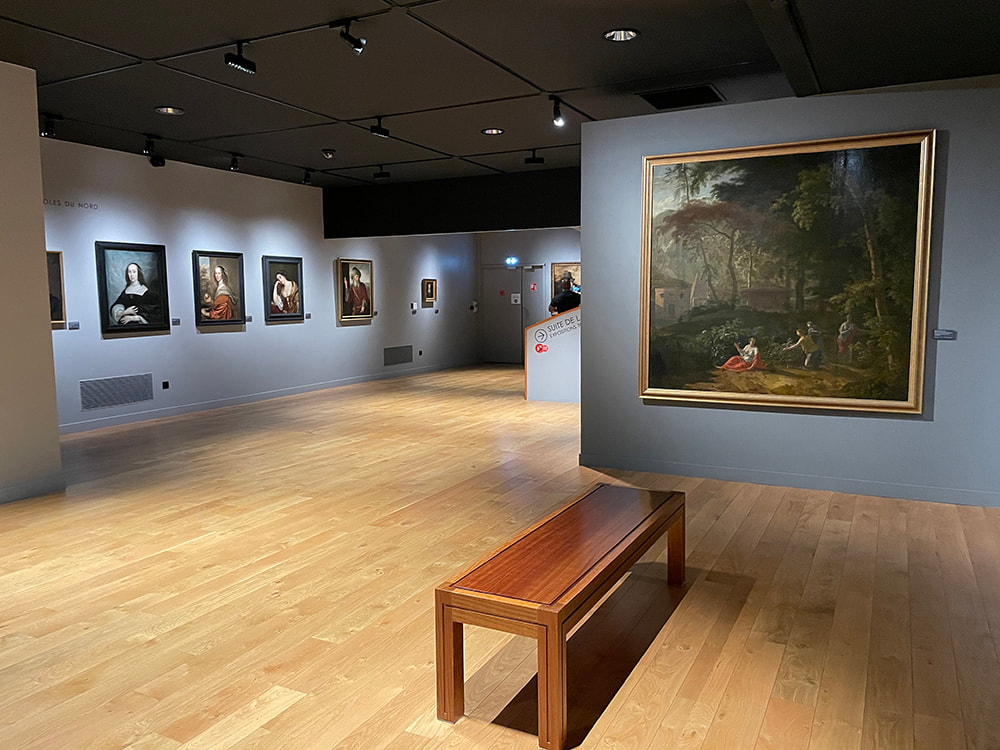|
Just off the main square behind the city's grand 19th century Italian Theater is Cherbourg's fine arts museum, the Musee Thomas Henri (Thomas Henri Museum). It is within walking distance of Cherbourg's cruise port.
The museum shares a modern building with the city's public library. However, the two floors dedicated to art are state-of-the-art galleries with good lighting and signage in both French and English. The story of this museum dates back to 1831 when the city council received a crate of art works from an anonymous donor. When additional crates kept arriving, the council voted to create a museum to display the works. It opened in 1835 in Cherbourg's hotel de ville. It turned out that the anonymous donor was Thomas Henri. A successful art dealer and critic, Henri had become a consultant to the Royal Museums of France and had accumulated a large art collection. Although he had traveled widely, Henri had not forgotten the city where he was born and so he gave his collection to Cherbourg. Henri's gift was not just a few paintings. In all, he donated 164 works dating from the 15th century to the 19th century. The works were not only French art but works from Italy, Spain, Flanders and Holland. As a result, the museum started off with a robust collection of European art. The new museum paid a dividend almost immediately. To develop his talent, a local youth, Jean-Francois Millet, spent many hours copying works in the museum's collection. Impressed, a group of citizens granted Millet a stipend that allowed him to pursue his art in Paris. He was to go on to become a founder of the Barbizon school and one of the most important French artists of the mid-19th century. Recognizing the role that the Musee Thomas Henri played in Millet's career, a large number of Millet's early works were donated to the museum by his family. As a result, the Thomas Henri has the second largest collection of Millet's works in France. If an artist wanted to achieve success in the 19th century, he would submit his work to be shown at the annual Paris Salon. A jury would then decide whether to accept or reject the submission. If it was accepted, there was a good chance it would be purchased by a private collector or by the government. The works purchased by the government were then distributed among the musuems of France including the Musee Thomas Henry. To the frustration of contemporary artsits such as the Impressionists, the Paris Salon was dominated by the conservative views of the Ecole de Beaux Arts. When the artistic value of Impressionism and modern art was realized, the art that had been championed by the jurors of the Paris Salon fell from favor. Recently, however, there has been a reassessment of that art and merit has been found in some of this work. Playing a part in this reassessment, the Musee Thomas Henri displays some of the more interesting Salon pieces that it received. In addition, through purchases and donations, the Thomas Henri has been able to broaden its collection with works from artists such as Post-Impressionist Paul Signac. The collection now includes some 300 works including works by Fra Angelico, Filipino Lippi, Nicolas Poussin, Jacque Louis David, Theodore Rousseau, and Eugene Boudin. Because of its wide-ranging collection the museum has been nick-named the “Little Louvre”. For more information about visiting the Musee Thomas Henri, see Cherbourg's website. |
Above: A bust of Thomas Henri - the artist and art critic whose donation of his art collection provided the impetus for establishing an art museum in Cherbourg.
|
|
|
|
Places to see art - - Cherbourg, France - - Musee Thomas Henri (Thomas Henri Museum)

